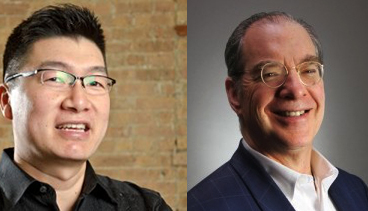Future Trends in Usability: Virtual Reality and Adaptive Systems

During a recent MedTech Intelligence event about human factors, an attendee posed an interesting question: What is the future trend with usability and human factors engineering, and which tool do you think is the most effective in identifying user experiences?
Here’s what two leading subject matter experts in the human factors engineering field had to say.
Michael Lau, Ph.D., director of human factors at Insight Product Development
[As far as] future trends: As companies realize the value of doing this entire activity, they’re not just forced to do it because of regulatory [requirements], they will [also] see that at the end of the day, their users are going to be happier [much] faster with their products than without this type of work. The trend will be pushing towards integrated human factors throughout the entire development process and having a team that transitions from early, up-front [work to] maintaining those user needs throughout the development, manufacturing and throughout post market and [even in] resolving issues. That’s one big trend we’ll see happen with human factors.
With respect to the most important tool: There are many important tools that should be used throughout the process, including upfront identification of user needs, being able to use analysis from the human factors domain to support design-development solutions, anthropometry, work flow analysis, etc.,—all sorts of different methods that you can employ to help you get at what is the best design solution; using risk assessments to inform and improve product; using usability testing. I don’t think there’s one most important tool; you should be employing all sorts of different tools along this journey.
Steve Wilcox, Ph.D., principal at Design Science
1: What I see in the future is the development of adaptive systems. It’s not so true yet in the medical area, but as the Internet of Things comes along, you’re going to have products that adapt to the individual users rather than are designed once and that’s it. Usability testing in effect, the type of actual use—will also [influence] the nature of the product. The prototype is Google. Google adapts—every time you do a search, it knows it’s you and it adapts its search to the next search you do. That’s the wave of the future.
2: The next thing is virtual reality. In more sophisticated forms of simulation, I have to believe [this is] going to part of our testing process, especially in [products] that you can’t test on a real person like a surgical instrument, [which] are tested in an animal procedure. In the future, I see that happening in virtual reality.
3: Rapid prototyping: It’s getting more and more sophisticated. One of the things I see beginning to happen now (and will continue in the future) is where you do really rapid iterations where you have the prototyping tools right in the usability testing room and after each test, you make alterations with 3-D printing or rapid software prototyping. So in the early stages, you can iterate after virtually every participant. It’s a really efficient to get things at least closer to where they need to be before you get more formal in the process.